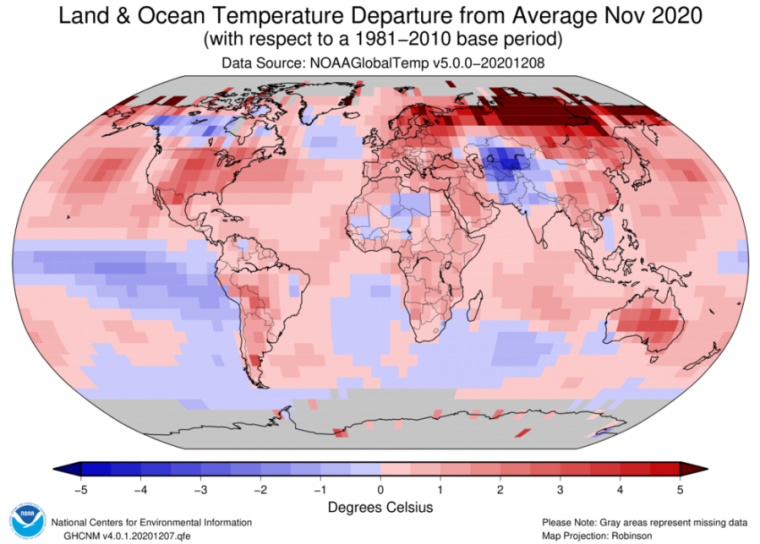NOAA expects La Niña weather patterns through March
Ars Technica » Scientific Method 2020-12-18

Enlarge / This was the second-warmest November on record, globally. (credit: NOAA)
NOAA released its monthly weather update Thursday, looking back at the fall and ahead through the rest of winter. As we close in on the (good riddance) end of 2020, its global temperature status is coming into focus. It’s looking like a bit of a coin flip between the year being the warmest or second warmest on record, depending on how you estimate the odds.
Globally, November was the second warmest on record, while the autumn period of September through November was the third warmest. The fact that this is true despite moderate La Niña conditions in the Pacific is notable, as those conditions bring cold, deep water up to the surface, which normally drags down the global average temperature.
At this point, 2020’s only competition for the warmest year on record is 2016, which was boosted by a strong El Niño. (That means more of the equatorial Pacific was covered by warm surface water.) The two years are so close that some datasets may even rank them in different order than others. NASA’s Gavin Schmidt, for example, estimates over 90 percent odds of setting a new record, but NOAA’s latest estimate is about 55 percent.